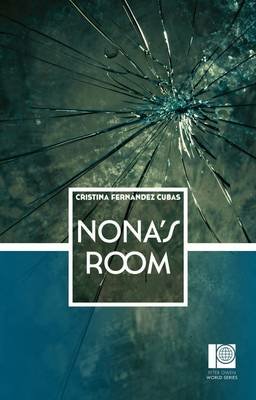Once again, July is Spanish Lit Month, hosted by Richard at Caravana de recuerdos and Stu at Winstonsdad’s Blog. A little later than planned, I’m joining in.
Today I’m looking at another title from the Peter Owen/Istros Spanish Spring trio (the last I reviewed was Inventing Love). The author biography tells me that Cristina Fernández Cubas is one of Spain’s most highly regarded short-story writers — and that Nona’s Room is her first book to be translated into English. After reading these six stories, I can see why Cubas has such a high reputation; and I’m keen to read more of her work.
The opening title story sets the tone of the collection. When the narrator’s sister Nona was born, her mother told her that Nona was special, and not to forget that “special is a lovely word.” Well, maybe that was how it happened. Whatever, the narrator knows that she has felt sidelined since Nona came along:
Because my life was very different before Nona came into the world. I don’t remember it very well, but I do know it was different. I’ve got loads of reasons to think that it was better, too. Much better. But once Nona was born things changed for ever, and that must be why I got used to thinking that my mother said those words the day she came into the world. That’s the day when I started a new life as well. My life with Nona.
(translation by Kathryn Phillips-Miles and Simon Deefholts)
This kind of uncertainty, and a slippery hold on reality, permeates all of Cubas’s stories. In this particular example, the narrator has started to lose her sense of having a life in and for herself when her parents focus all their attention on special Nona at her special school, Nona with her array of imaginary friends. It’s when the narrator sees something inexplicable happen to her sister that she becomes determined to find out the truth, and discover what secrets lie behind the door of Nona’s room…
Yes, I am tiptoeing around something that I don’t want to reveal. But I don’t want to give the impression that this story is ‘all about the twist’: ‘Nona’s Room’ writhes and shifts all the way through, with a constant sense that something else is set to emerge.
That same sense comes right to the fore early on in ‘Interior with Figure’, when the narrator describes the Cecioni painting of that name and says that the girl depicted “reminds me of a character in a short story I wrote recently whom I called Nona.”
The narrator of ‘Interior with Figure’ admits to being a writer but stops short of revealing her name. Still, that mention of Nona tempts us to perceive this story as being closer to reality than some of the others. Our narrator goes on to recount seeing a school party at the gallery she is visiting, and hearing one girl who has a particularly dark interpretation of Cecioni’s Interior with Figure. The girl speculates that the figure in the painting is hiding from her parents, because she knows they want to kill her for what she has seen.
It strikes the narrator that the girl’s comments on the painting may actually be a coded cry for help. She wonders what she should do: go to the police? But what would she tell them? ‘Interior with Figure’ is a story about interpretation: a series of subjectivities which crystallise into a whole all unto itself. That’s my interpretation, anyway…
‘The End of Barbro’ sees a woman drive a wedge between the man she marries and his three daughters. What makes this story particularly striking is that it’s narrated by the three sisters collectively:
We hardly spoke a word and didn’t dare look each other in the eye, but with a few drinks inside us we sorted through our thoughts and memories as if they were scenes from a film fast-forwarding at a frenetic pace and featuring only two protagonists: Barbro and our father. And when we remember her appearing on the doorstep barely a week earlier it seemed as if years and years had gone by. They weren’t the same, and neither were we.
The effect of this narration is quite eerie, because we lose sight of the sisters’ individual lives and personalities (perhaps reflecting how they feel squeezed out by Barbro), which makes it harder to imagine them as characters. In turn, that makes the story’s sense of reality unstable… and there we’re back to the normal state of affairs in Nona’s Room.
Elsewhere
Stu has reviewed Nona’s Room here; I like his comparison to Roald Dahl’s stories. You can also read an extract from the title story here at the European Literature Network.
Book details
Nona’s Room (2015) by Cristina Fernández Cubas, tr. Kathryn Phillips-Miles and Simon Deefholts (2017), Peter Owen Publishers, 160 pages, paperback (review copy).

Recent Comments